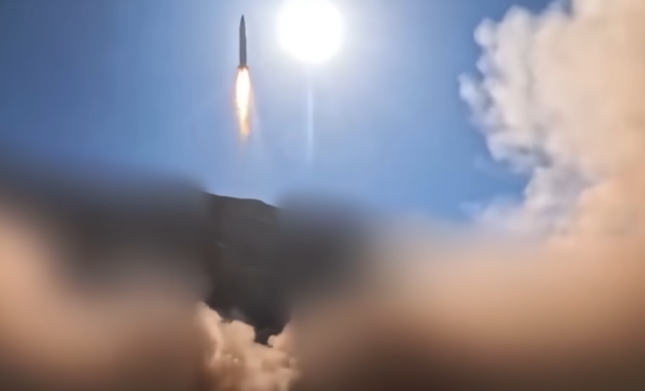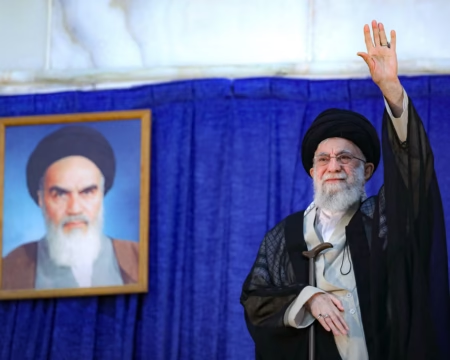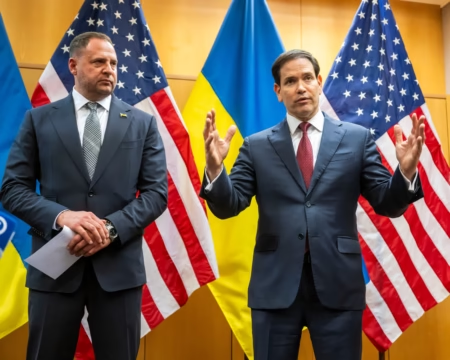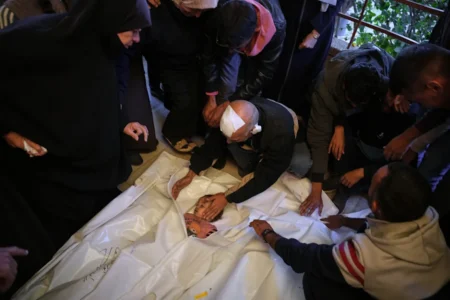Iran has responded strongly to recent U.S. attacks by launching a powerful missile assault on Israel, marking a new phase in the ongoing conflict. For the first time, Iran used its advanced Kheibar Shekan missile, targeting major cities including Tel Aviv and Haifa. This marked Iran’s 20th strike on Israeli territory and the debut of one of its most feared weapons.
On Sunday, several locations in Israel were struck, causing large-scale damage. Key infrastructure sites were hit, including airports, military bases, and research centers. Reports from inside Israel say that the attacks left parts of the cities in ruins. Around 86 people were reportedly injured in the assault.
The Islamic Revolutionary Guard Corps (IRGC) confirmed that they had used the third-generation Kheibar Shekan ballistic missile in the operation. According to their statement, the missile hit its intended targets with precision and great force. This attack followed just hours after U.S. forces hit Iran’s nuclear facilities.
The IRGC Aerospace Force was in charge of the missile strike. They launched a total of 40 missiles, powered by both solid and liquid fuel. Among these, the newly upgraded Kheibar Shekan was used for the first time. It features multi-warhead capability, greater accuracy, and stronger destructive power. The missile was designed to be highly effective, even against modern air defense systems.
Iran named the missile “Kheibar Shekan,” which means “Kheibar Destroyer” in Persian. The name refers to an ancient Jewish fortress taken over by Muslim fighters centuries ago. This symbolic name highlights Iran’s message behind the strike. The missile is built to fly fast and low during its final approach, making it hard to detect and shoot down.
Iran has long hinted that it had stronger weapons in reserve. With this strike, the country showed one of those cards. Military experts believe even more powerful missiles could be used if tensions grow further.
Sunday’s missile barrage was Iran’s direct answer to a series of airstrikes launched by the United States on three nuclear sites in Iran. These included the Natanz, Isfahan, and Fordow facilities. Among them, the Fordow nuclear site was the main target. U.S. aircraft used stealth bombers and bunker-busting bombs during the operation.
Tehran has admitted that some damage was done, but described it as limited. Still, the Iranian government warned that it would respond with greater force if provoked again. Officials in Iran are now accusing the United States of violating ongoing talks and increasing the risk of a larger war.
Iran’s missile attack focused mainly on the cities of Haifa and Tel Aviv. Key locations targeted included Ben Gurion Airport, military command centers, and defense-related buildings. Sources say that the IRGC’s missile forces successfully destroyed several strategic points, dealing a serious blow to Israel’s control systems.
This latest round of attacks is part of a growing conflict in the region. Tensions had already been high, but the U.S. airstrikes appear to have pushed Iran to act openly and aggressively. Military analysts believe that this could lead to further escalations unless diplomatic efforts resume quickly.
The use of the Kheibar Shekan missile adds a new layer to Iran’s military strategy. It sends a strong signal to both Israel and the United States. Iran wants the world to know that it can strike back hard and fast when needed. With this missile, Tehran has shown that it has the tools to change the balance of power in the region.
This strike is also a warning. Iran may now feel more confident in using its advanced weapons, especially if it feels cornered. The missile’s high accuracy, long range, and ability to bypass air defense systems make it a serious threat. By launching it now, Iran also seems to be testing how far it can go without triggering a larger response from its enemies.
Meanwhile, international leaders are urging calm. But with both sides exchanging attacks and strong words, peace seems far away. The situation is being watched closely by many countries, who fear that the fighting could expand across the region.
The coming days will be key. Both Iran and Israel may try to show strength while avoiding a full-scale war. But with powerful missiles now in play, and tempers high, the risk of more violence is growing.







